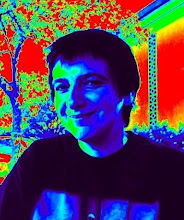Drawing theories

I've entertained myself recently with the wonderful recently published book of David Kaiser "Drawing Theories Apart" on the history of postwar physics, which focuses in particular on how a single computational technique, that of Feynman diagrams to evaluate radiative corrections in quantum field theory, began to spread among the physicists in the US and other countries, between the end of the 1940s and the early '50s. This is again a rare and beautiful case of a book on the history of science which actually talks about the history of science and is not about collecting idiotic anecdotes and gossips nobody could care the less about (which is the content, or rather no-content, of 99% of the books that claim to be about the history of science). This book is real and tells you real stuff!
The topic is extremely well chosen, as following how a new technique takes root in the community of working scientists reveals a tremendous amount on the inner workings of that community. The first systematic introduction of postdoctoral positions in physics in American academia was one of the most important ingredients that determined the quick spreading of new scientific methodologies. The fact that in the US, then as today, postdocs are always hired from a different university and always move on to another different university after completing their postdoctoral appointment, makes them an ideal medium for the rapid spreading of novel techniques from one place to another. Among the innovations that Oppenheimer introduced during his first year as director of the Institute for Advanced Study was the hiring of a large number of postdocs, so many that, for lack of office space, they were all put to share a single office (Oppenheimer's own office). Among them were all the first users of Feynman's diagrammatic techniques, starting with Dyson who played a crucial role in clarifying the method and exlaining it to other colleagues. So, even if Oppenheimer himself was for quite a while unconvinced by this new technique, the community of young physicists that he helped creating quickly absorbed it and began spreading it, in turn, when they moved on to their later academic appointments around the nation. Feynman's own very first lecture on the subject, delivered earlier at a major conference, was very badly received by the senior scientists, but the young postdocs influenced by the "peer pressure" exerted by Dyson, were far more receptive and prompt to pick up the method and begin to apply it to what they were working on. Similarly instructive are the detailed accounts of how the diagrammatic method was adopted and developed in a sample range of other countries: especially the examples of Japan and the Soviet Union. In the latter, the calculations of cross sections needed for the development of the hydrogen bomb were what catalyzed the research on diagrammatic methods in quantum field theory, which then only slowly trickled into more canonical venues of academic discussion of theoretical physics, such as the all powerful Landau seminar. The Japanese case is inextricably tied up to the reconstruction of the Japanese scientific community in postwar years and its venues of contact with the West and America in particular, through a few crucial journals and semi-formal publications, circulated with difficulties ranging from the scarcity of paper to the travel restrictions imposed on Japanese scientists by occupying American military. The book does not restrict its analysis to the immediate beginning of the diagrammatic method in postwar years. For example, it continues to describe the coming of the first textbooks, from the early but very influential Cornell lectures of Dyson, which only circulated in manuscript form, to the later more officially published textbooks. It is interesting to see how, unlike the usual perception one may have of the fact that textbooks tend to present a well established universally accepted form of scientific knowledge (Kuhn's paradigm), the early quantum field theory books were as far as one can think from this point of view, trying instead to give quick access to young researchers to a set of useful computational techniques, without trying to present a consistent a satisfactory general theory encompassing and justifying them. The book is full of hindsight on the inner workings of theoretical physics. I've learned a great deal by reading it. For those who use Feynman diagrams in their everyday life this will be a great opportunity to learn the making of the technique as we know it today, not just out of intellectual curiosity, but because in watching closely the diversity of applications and variations of the same method as they developed in history one may gain some useful ideas on the ongoing evolution of the subject. Many decades have passed since the introduction of the diagrammatic technique, but even today it is stimulating new research, for instance in its new interactions with higher mathematical structures, such as Hopf algebras, Galois theory, motives. It's a very good time now to look back to the beginning in order to better look forward.

It is also a perfect timing for the excellent decision that World Scientific made of publishing, for the first time, the original Cornell lectures of Freeman Dyson that taught the Feynman diagrammatic technique to a generation of young physicists. No longer the mimeographed copies of handwritten notes, but a nice modern LaTeX typesetting, the "Advanced Quantum Mechanics" course is beautiful to read. You'll find the Schwinger and Feynman approaches to quantum field theory back to back, compared, integrated, explained with the great clarity that was always typical of Dyson's writing style. That's one must have quantum mechanics book.


<< Home